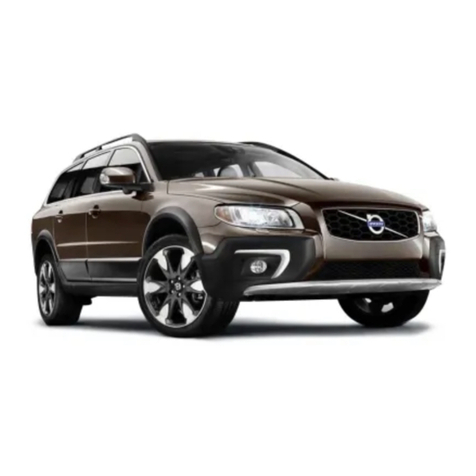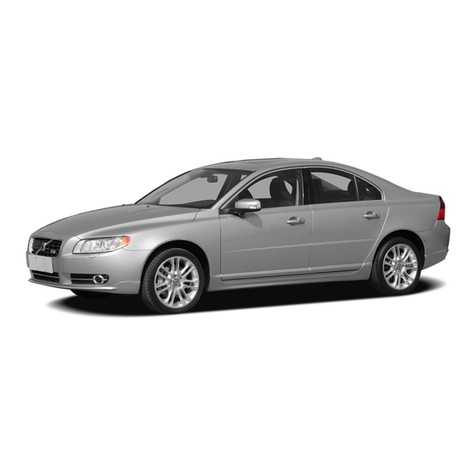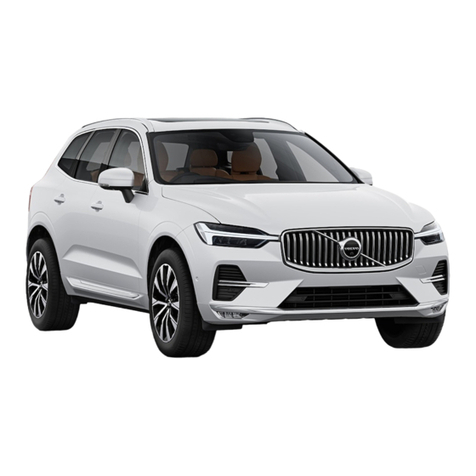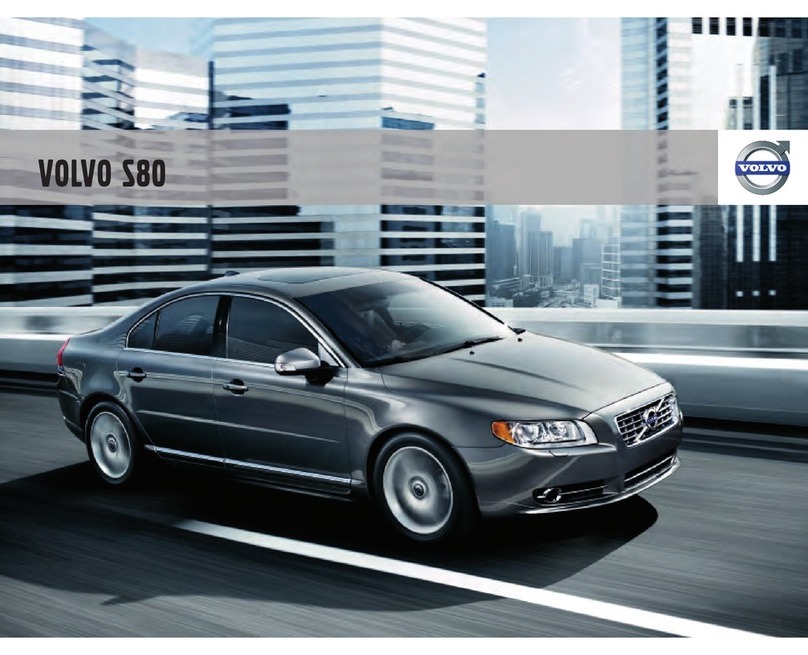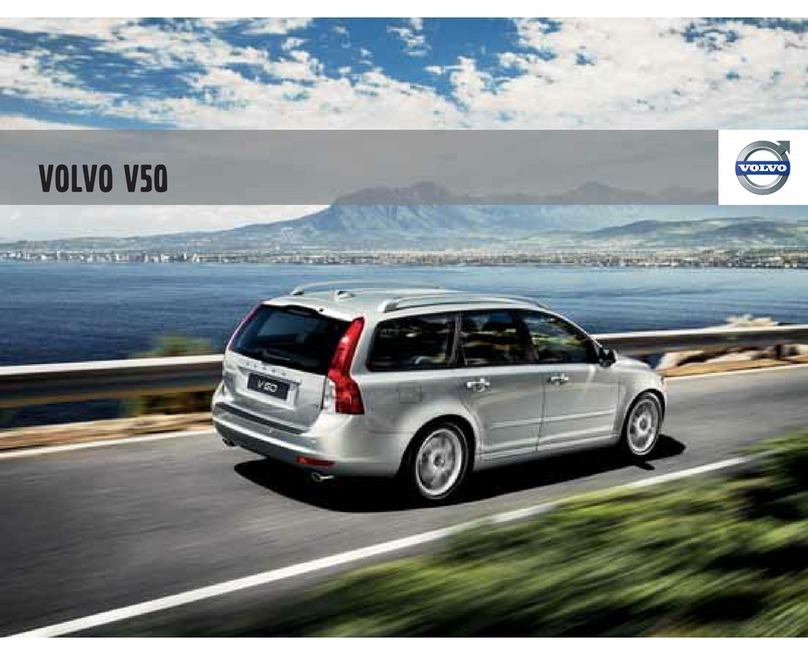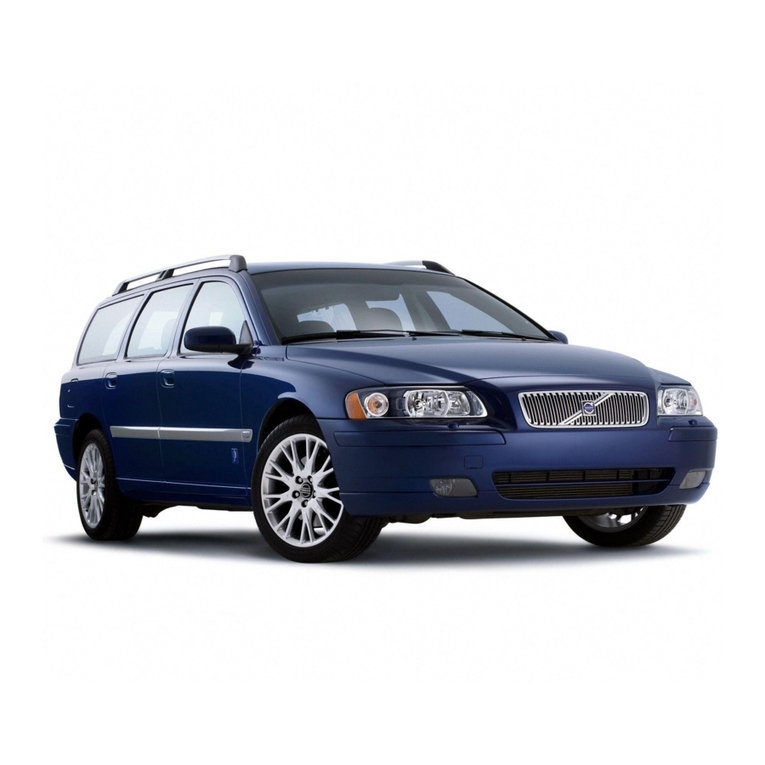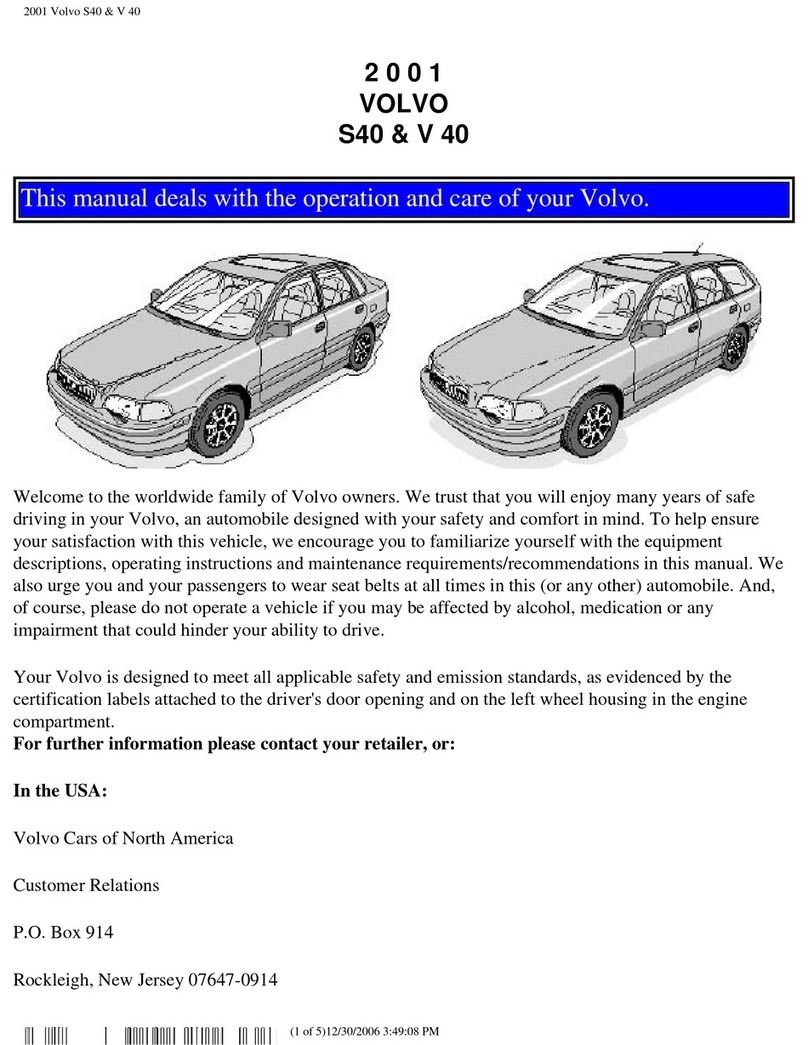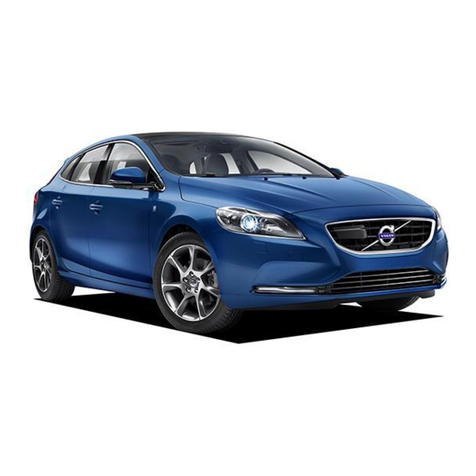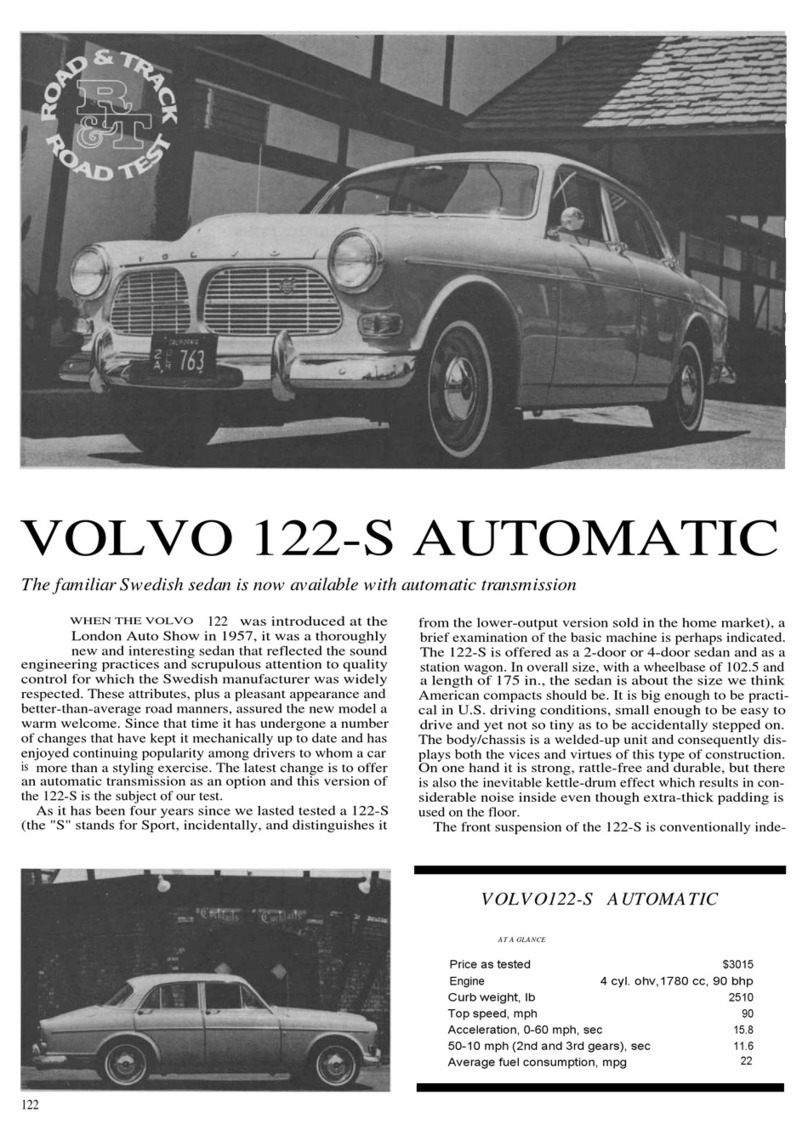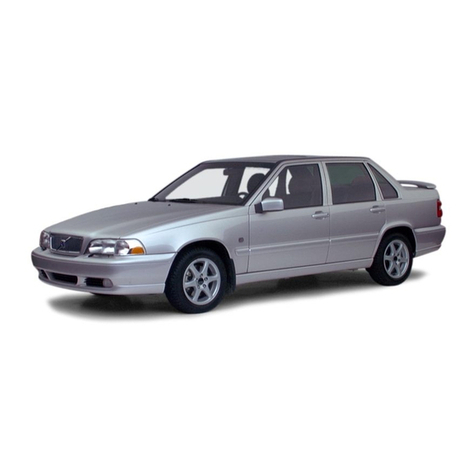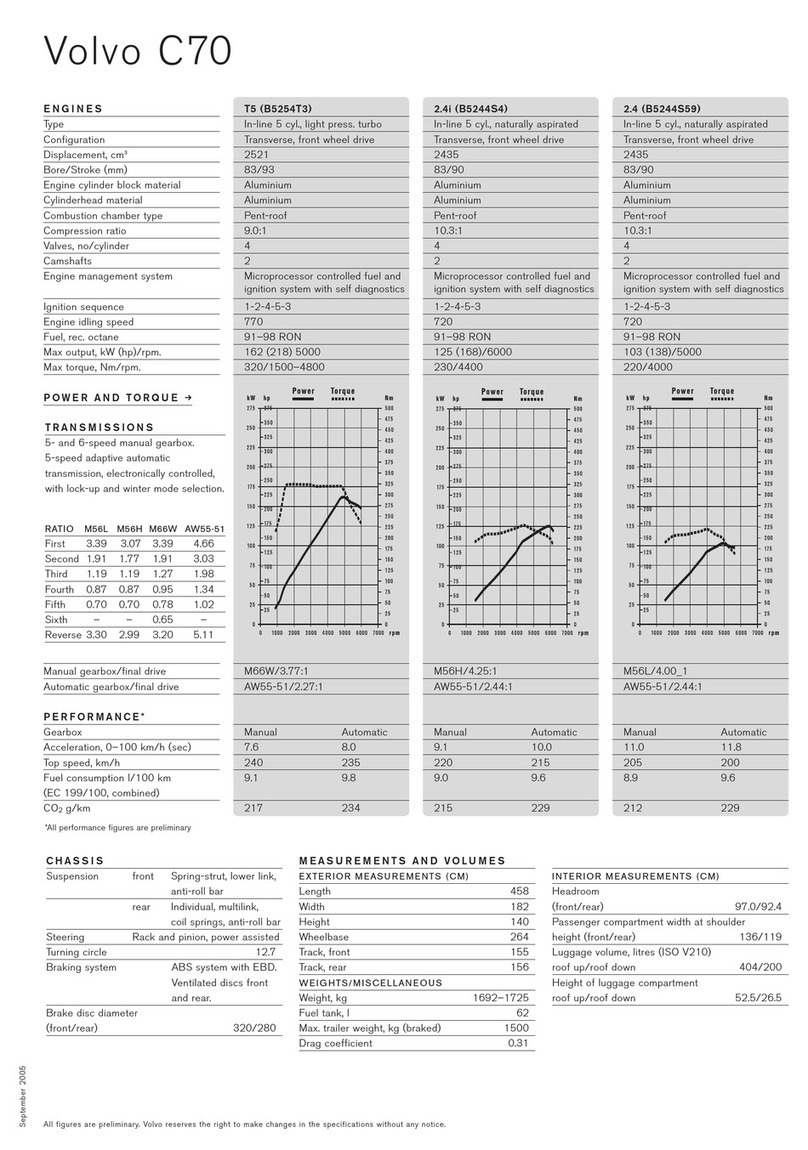
Description
Body
Hood (1
The hood Is fitted with a locking
device
which is operated from the
driving seat
by means of a lever under
the instrument
panel. The hood II
unlocked and can be
lifted up after
this lever has been pulled
backwards,
The hood ii retained In let tipped up
position by means of \ spring clamp
which engages the hood hinge. As
a
further safety measure, this can b«
locked in this position by means of a
screwdriver, see illustration.
Doors and locks(2
The car is provided with locks for
both the doors. The doors are locked
from inside by moving the handle
downwards (position 3). In order to
prevent you from being locked out
of the car, the door handle lifts again
automatically when the door is
closed.
Jf you happen to lose the keys, you
car go
to your nearest Volvo dealer
who will
supply you with new keys.
In order to prevent the locks from
freezing during the winter, these
should be regularly "lubricated" with
some antl-freeze agent. Several pre-
parations of this type are available
commercially.
Remember to apply it
in good time
, and
to apply this ''lubricant'
1
regularly
to the locks
during the winter.
Position 1 Open
Position 1 Closed
Position 3 Locked
If
the lock has frozen up in extremely
|cold weather be careful that you do
not
break the key. A good plan is to warm up
the key and then insert it
quickly into the
lock whereby the ice there melts.
Adjusting the front seats
^k The front seats can be adjusted both
forwards and backwards by moving
the
small handle an the Inner adjuster rail to
one side. Sit in the seat with
your leet
on the floor and move the
seat
to the
most comfortable position. After
adjusting make sure ihat the
catch on
the handle engages properly
with the
hole in the adjuster rail.
The angle of the front seat backrests
can
be adjusted by removing or adding
further shimi under the backrest set
ting
screws,.
Luggage compartment
The luggage compartment is locked
with the same key as used (or the door.
The compartment is opened by turn-
Ing the handle anti-clockwise. The lid
' Is lifted up
as
far as it will go and then
lowered slightly. The lid is then held
in this position by a catch built Into
the left-hand hinge. When the lid
ij to be closed again, it should first
be lifted up so that the catch is re
leased and then lowered,
^- The spare wheel is attached by a bolt
^P with washer and a wing nut. When
the wheel is to be used, unscrew the
wing nut after which the bolt should
be lifted upwards and moved out
wards as shown in fig. 3.
Always be careful to tighten the spare
wheel securely and to pack in the
toolbag
and jack properly as otherwise irritating
rattles can arise.
^^^

